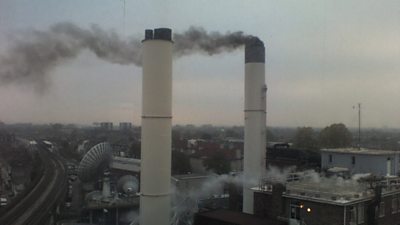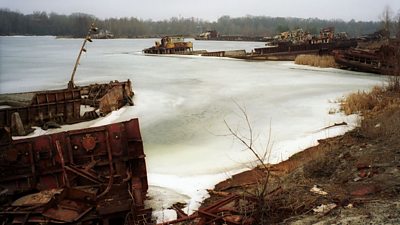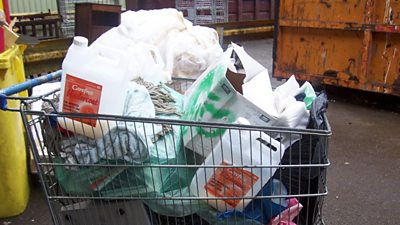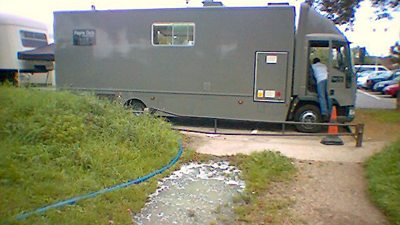In the past (particularly before the 1990s) the environment was not protected in the same manner as under the contemporary regulatory regime. Consequently, historic activities and development have created significant areas of land contamination.
Contamination can create a risk to both personnel using a site, construction workers, the infrastructure of a development as well as the health of the surrounding environment. The Βι¶ΉΤΌΕΔ is committed to providing a safe working area for all Βι¶ΉΤΌΕΔ staff and supply chain as well as protecting the environment and Βι¶ΉΤΌΕΔ assets.
These guidelines establishes minimum operating standards that must be applied at all sites and the legal issues personnel must be aware of. If you have any queries relating to this Standard then you should contact the Safety Advice Line.
What Can Go Wrong?
General Hazards
The pollution can be caused by the following processes:
- Uncontrolled discharges of liquid chemicals including fuels and oils.
- Inappropriate disposal of solid and liquid waste products.
- Importation of contaminated construction materials
- Spillages or leakages from fuel, oil or chemical storage vessels, pipe work or plant.
- Leaching, due to rainfall infiltration and runoff, from materials deposited on open ground.
Legal/Βι¶ΉΤΌΕΔ Requirements
- There are no specific legal requirements to draw to your attention; you must still apply the control measures that are relevant to your activity.
Control Measures
Property Acquisition and Disposal
- When acquiring or disposing of property assets an Environmental Risk Screening Assessment must be undertaken as part of the due diligence process.
- Any significant contamination risks should be quantified.
- In the acquisition/disposal phase the liability for any contamination must be clearly determined.
- When acquiring property, any land contamination liability must be covered by suitable monies to ensure liability is fully accounted for.
- The appropriate Environment Agencies or Local Authorities should be contacted to ensure all duties are discharged.
Acquisition, design, construction and operation
- Baseline data at a site must be gathered and maintained at the site on the Baseline Data Form.
- An Environmental Risk Screening Assessment must be undertaken at the site every 5 years or when the baseline data significantly changes.
- Significant potential risks must be investigated and the presence or absence determined.
- Any substantiated risks must be assessed and where necessary monitoring and remedial systems proposed.
- Remedial systems must be enacted and validation that residual risks have been attained documented to the satisfaction of the necessary regulators.
- Report on the status of the land.
- The appropriate Environment Agencies or Local Authorities should be contacted to ensure all duties are discharged.
Division Specific Issues
- No division specific issues
FAQs/Did You Know?
- No FAQs
Recommended links
- [Βι¶ΉΤΌΕΔ Network only]
Environment topics
 Air PollutionAir pollution can have damaging effects on human health and the environment and it is crucial to minimise emissions to the atmosphere.
Air PollutionAir pollution can have damaging effects on human health and the environment and it is crucial to minimise emissions to the atmosphere. Built EnvironmentIn the UK these impacts are controlled by legislation, particularly planning law.
Built EnvironmentIn the UK these impacts are controlled by legislation, particularly planning law. Energy ManagementThis guidance provides information on energy management associated with Βι¶ΉΤΌΕΔ activities in order to ensure good environmental practice and compliance with relevant legislation.
Energy ManagementThis guidance provides information on energy management associated with Βι¶ΉΤΌΕΔ activities in order to ensure good environmental practice and compliance with relevant legislation. Environment on Production and EventsThis guidance provides information on how to reduce the risk of environmental incidents, nuisance or legal non-compliance whilst making programmes and running events.
Environment on Production and EventsThis guidance provides information on how to reduce the risk of environmental incidents, nuisance or legal non-compliance whilst making programmes and running events. Environmental NuisanceNuisance is something that causes an unwanted disturbance to someone's quality of life or something that can have a negative effect on their health.
Environmental NuisanceNuisance is something that causes an unwanted disturbance to someone's quality of life or something that can have a negative effect on their health. HeritageHeritage consists of buildings and features that are man-made and valuable for their architectural or historical interest.
HeritageHeritage consists of buildings and features that are man-made and valuable for their architectural or historical interest. Land ContaminationBoth former and current land uses can pollute land and water resources by releasing pollutants to the environment.
Land ContaminationBoth former and current land uses can pollute land and water resources by releasing pollutants to the environment. Natural Environment and WildlifeThe natural environment contains habitats and species that are ecologically valuable and landscapes that are appreciated for their beauty and historical interest.
Natural Environment and WildlifeThe natural environment contains habitats and species that are ecologically valuable and landscapes that are appreciated for their beauty and historical interest. Oil and Chemical ManagementOil and chemical management can occur from fixed and temporary generators, set building, special effects, cleaning and associated activities.
Oil and Chemical ManagementOil and chemical management can occur from fixed and temporary generators, set building, special effects, cleaning and associated activities. Waste ManagementThis guidance provides information on how to manage wastes arising from Βι¶ΉΤΌΕΔ activities in order to ensure good environmental practice and compliance with relevant legislation.
Waste ManagementThis guidance provides information on how to manage wastes arising from Βι¶ΉΤΌΕΔ activities in order to ensure good environmental practice and compliance with relevant legislation. Water and Waste Water ManagementThis guidance provides information on how to manage water and waste water arising from Βι¶ΉΤΌΕΔ activities in order to ensure good environmental practice and compliance with relevant legislation.
Water and Waste Water ManagementThis guidance provides information on how to manage water and waste water arising from Βι¶ΉΤΌΕΔ activities in order to ensure good environmental practice and compliance with relevant legislation.
More from SSR
- Your platform to record accidents, risk assessments, assurance monitoring and inspections
- Safety Equipment StoresJust one number to call: 0844 800 8875
- Βι¶ΉΤΌΕΔ Safety GuidelinesAn A-Z of Βι¶ΉΤΌΕΔ's Health and Safety Guidelines
- Safety Advice Line: 0370 411 0464 Email: safety@bbc.co.uk
- A-Z of Βι¶ΉΤΌΕΔ Safety Guidelines
- Accident Reporting and Investigation
- Βι¶ΉΤΌΕΔ Health & Safety Policy
- Contractors (incl. vetted lists)
- Contributors
- Fire Safety
- Freelancers
- Independent Production Companies
- Risk Assessment
- Safety Alerts
- Safety Responsibilities
- Safety Training
- Sets & Premises Safety Guide
Events guidance - key links:
- Exhibitions
- General Guidance
- Indoor Location Recce Checklist
- Outdoor Location Recce Checklist
- Major Incidents & Emergency Planning
- Marketing and Promotional
- Noise Exposure
- Planning and Management
- Responsibilities
- Responsibilities Form
- Laser Lighting Effects
- Strobe Lighting
- Temporary Stages and Rostra
Health topics - key links:
- (Βι¶ΉΤΌΕΔ network only)
- Contributors Fitness to Participate
- Display Screen Equipment (DSE)
- (Βι¶ΉΤΌΕΔ network only)
- First Aid and Welfare on Location
- International Travel - Risks & Health
- Manual Handling
- Mental Health: Βι¶ΉΤΌΕΔpage
- (Βι¶ΉΤΌΕΔ network only)
- Personal Health and Wellbeing
- Pregnancy
- Psychological Trauma Support & Trauma Risk Management (TRiM)
- Tiredness and Fatigue
- Travel Health Contacts
Βι¶ΉΤΌΕΔ High Risk - key links:
- CBRN and Industrial Spills
- Covert Filming
- Crisis Management and Security Support
- Demonstrations, Protests and Crowds
- Disaster Coverage
- Door Stepping
- (Βι¶ΉΤΌΕΔ network only)
- (Βι¶ΉΤΌΕΔ network only)
- Public Order
- Safety Equipment Stores
Βι¶ΉΤΌΕΔ Journalism - key links:
Βι¶ΉΤΌΕΔ Productions - key links:
- Aerial Filming and Airfields
- Animals: Displaying and handling for performance
- Boats: Working on
- Children and Young People
- Driving
- Electrical Equipment and Systems
- First Aid and Welfare on Location
- Food Safety (Cooking and Catering)
- Remote Location Working
- Roads and Streets: Working by
- Security of Productions on Location
- Stunts
- Tiredness and Fatigue
- Unmanned Aerial Systems (UAS aka Drones)
- Vehicles: Recording in, from and around
- Working at Height: Mobile Elevating Work Platforms
- Working at Height: Tower Scaffolds
- (Βι¶ΉΤΌΕΔ Network only)
Βι¶ΉΤΌΕΔ Security - key links:
Βι¶ΉΤΌΕΔ Sport - key links:
About this site
This site describes what the Βι¶ΉΤΌΕΔ does in relation to managing its health, safety and security risks and is intended for those who work directly for the Βι¶ΉΤΌΕΔ.
It is not intended to provide instruction or guidance on how third parties should manage their risks. The Βι¶ΉΤΌΕΔ cannot be held liable for how this information is interpreted or used by third parties, nor provide any assurance that adopting it would provide any measure of legal compliance. More information
Some links on this site are only accessible when connected to the Βι¶ΉΤΌΕΔ network
